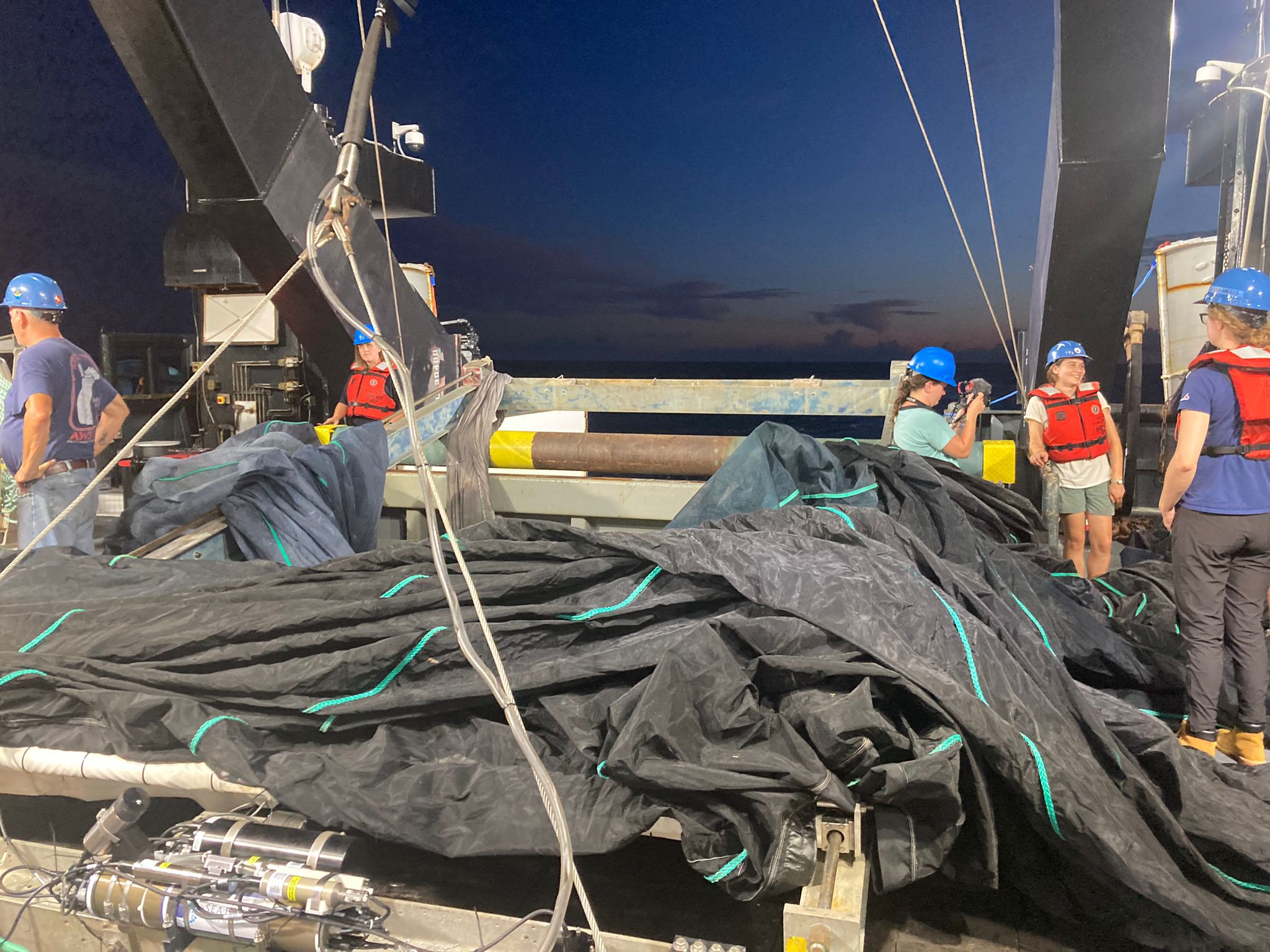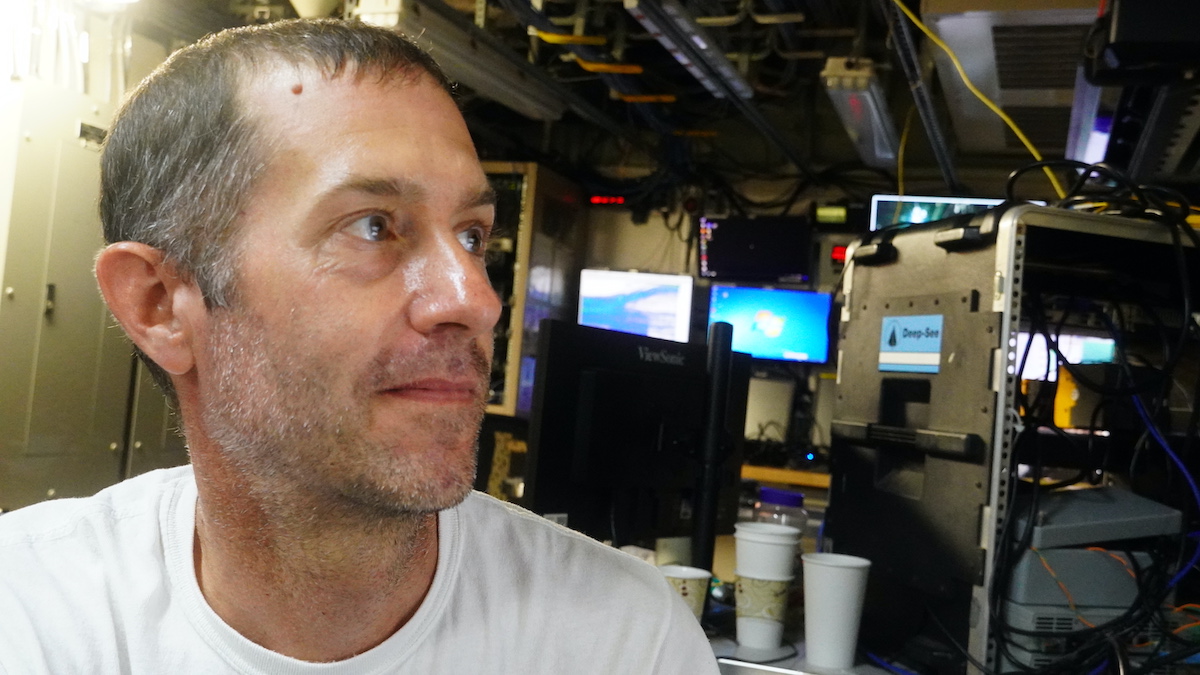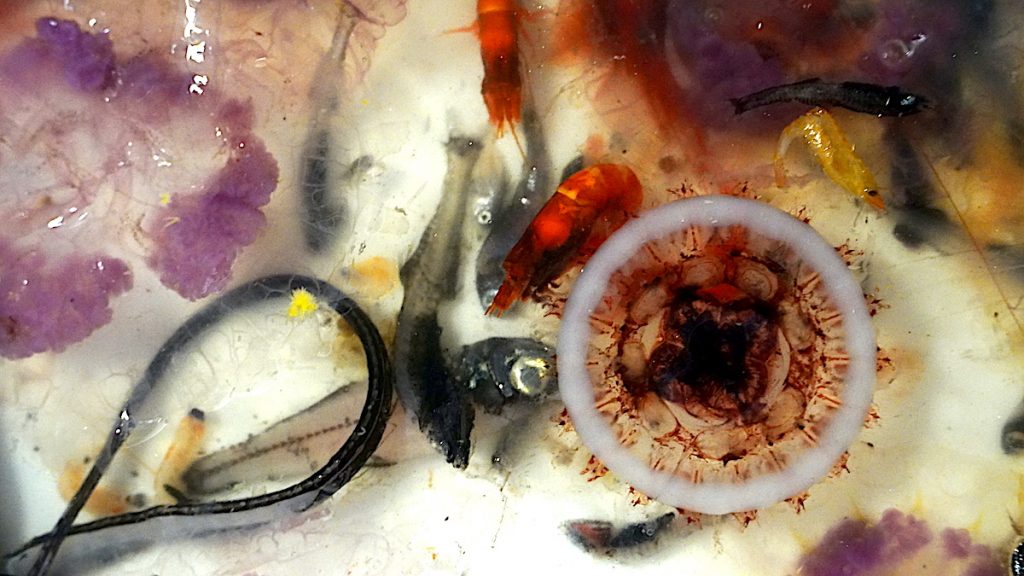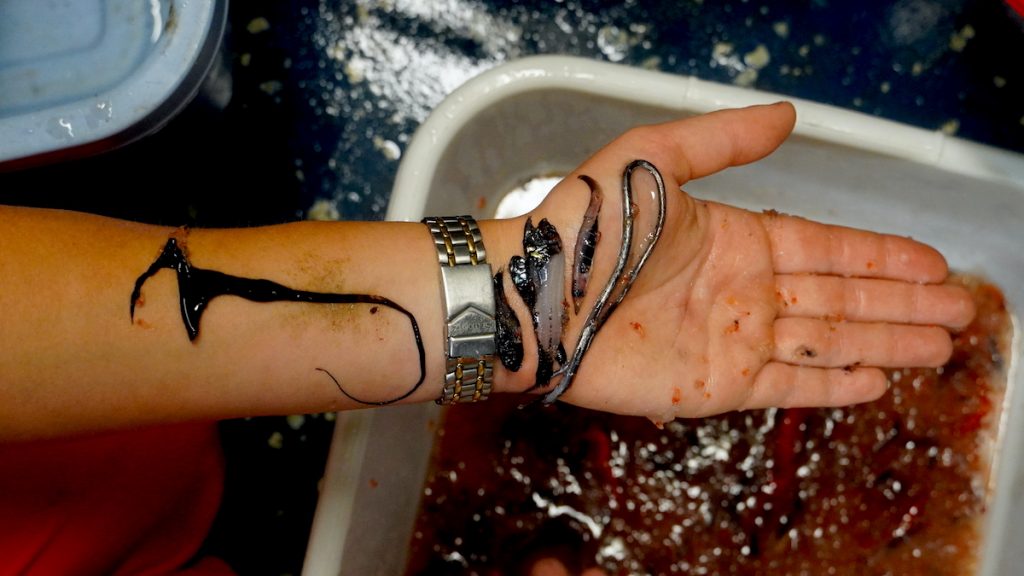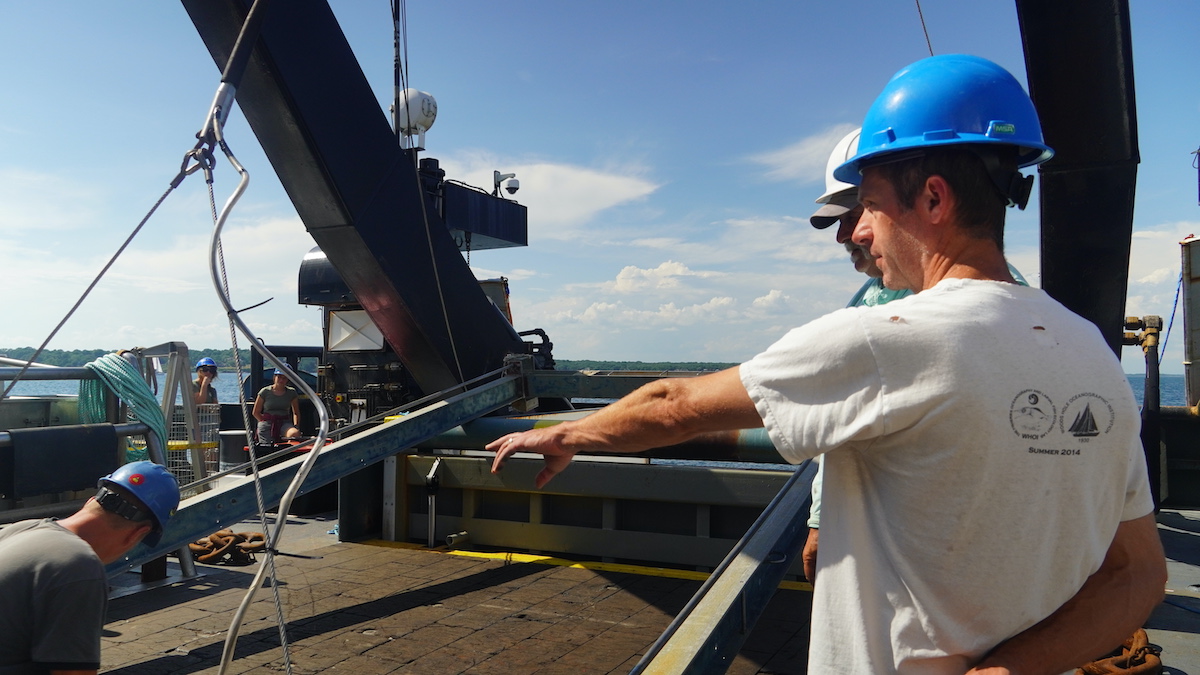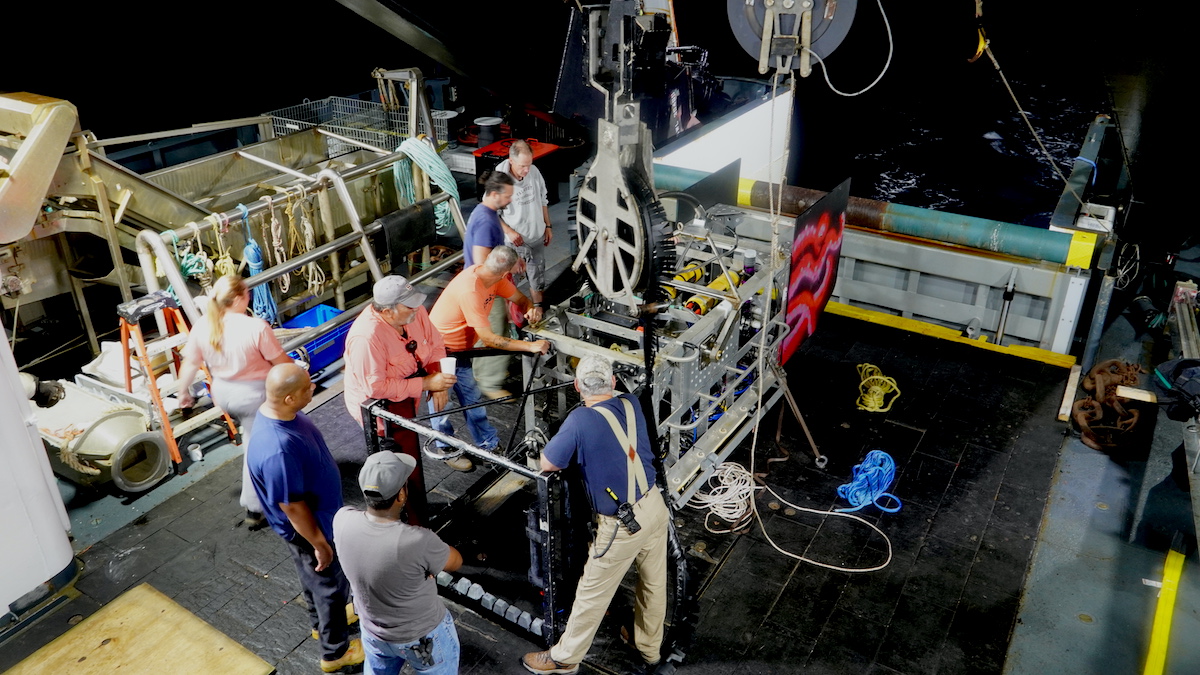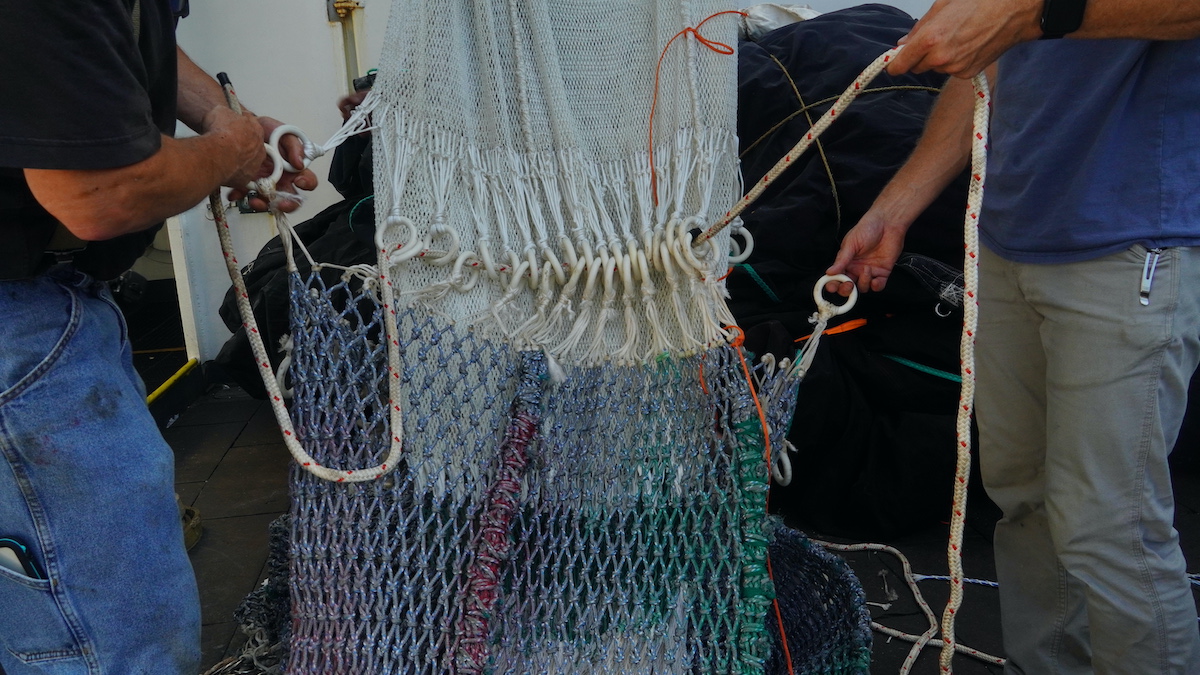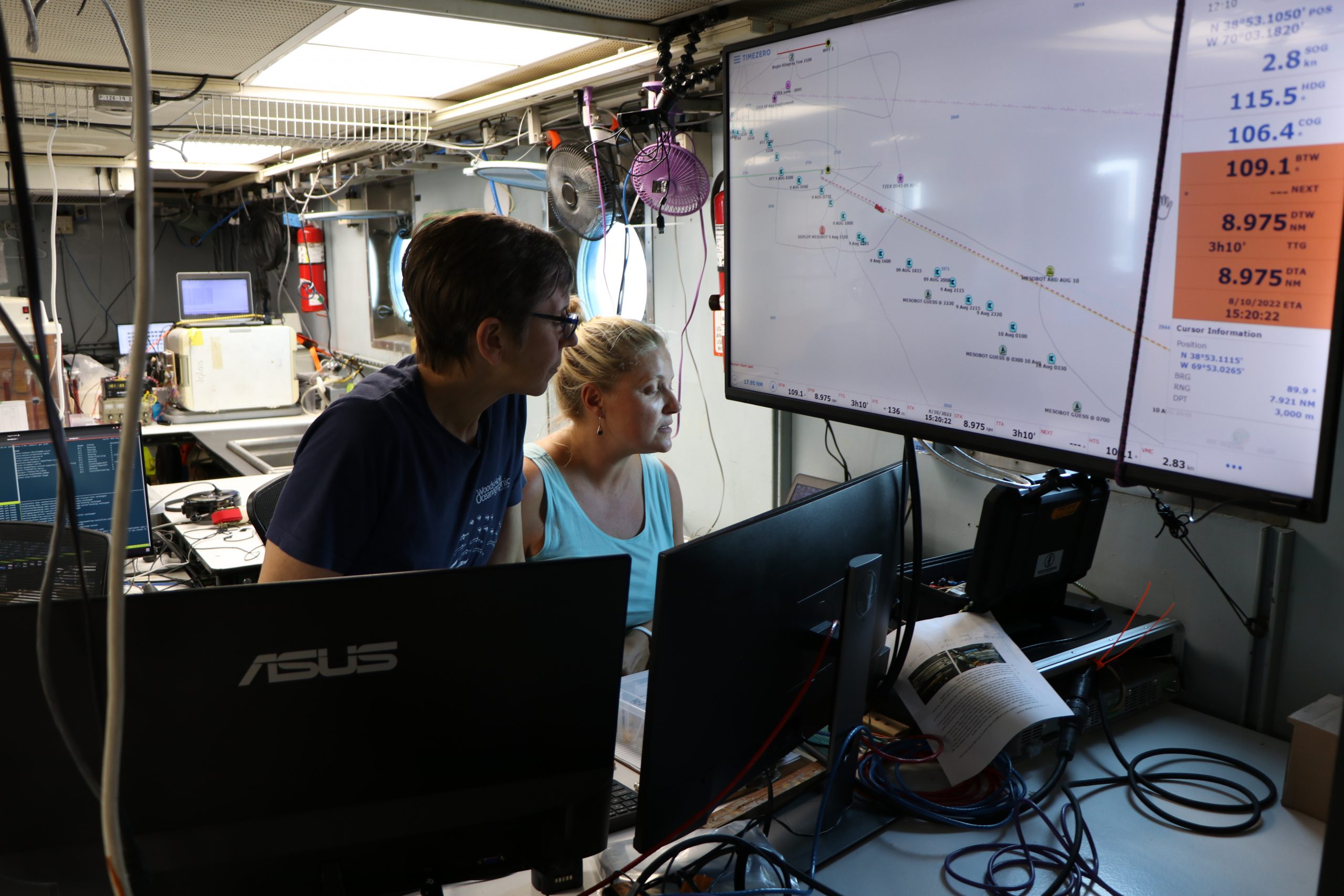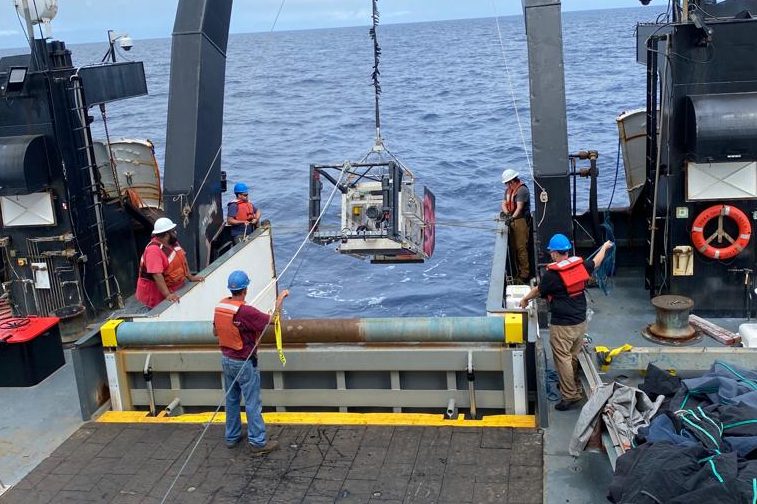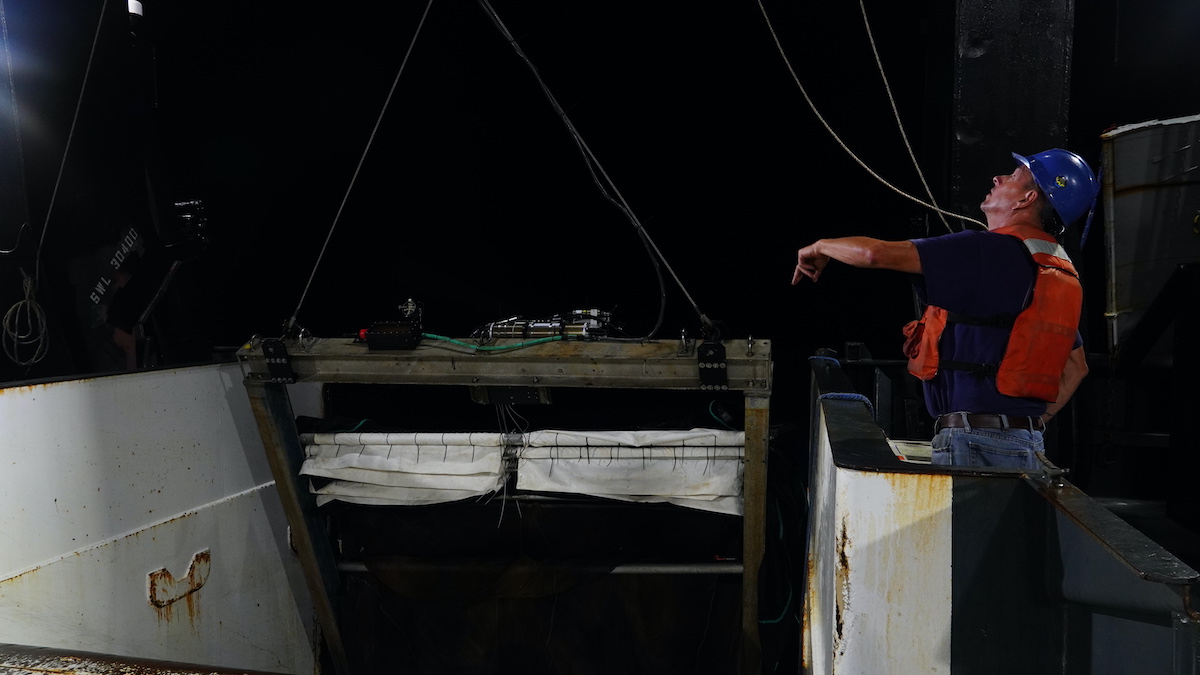Field Notes: The big reveal August 9, 2022
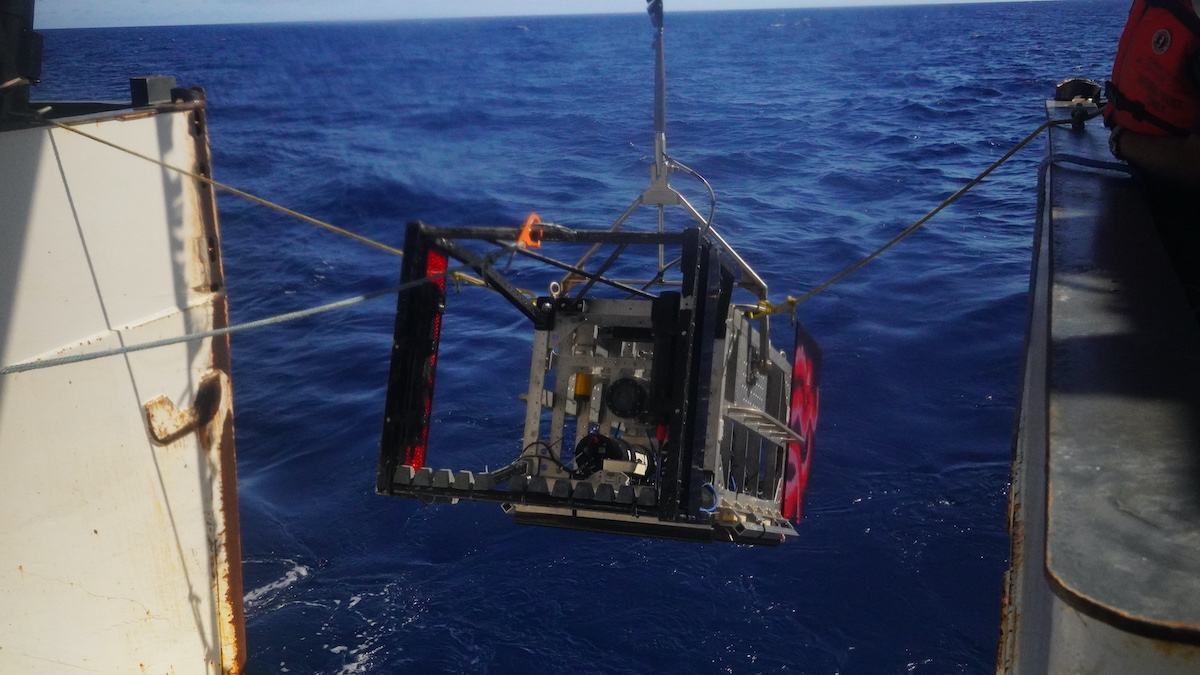
The daily cycle of instrument deployments and recoveries went into full swing today. The Deep-See was recovered smoothly at 10 a.m., and a few hours later the midwater trawl nets were reeled out into the Atlantic.
At sunset, it was time for the MOCNESS tow net to take a dive. WHOI marine ecologist Joel Llopiz and research assistants organized and spread five nets across the device’s giant metal frame. Once deployed, the MOCNESS began its journey to 1,000 meters (3,280 feet) below the surface. As the frame descended through the water, researchers opened and shut each net at specific depths, collecting samples between 0-1000 meters; 1000-500 meters; 500-300 meters; 300-100 meters; and 100-0 meters.
The scientists are targeting the deep scattering layer, comparing the acoustic data showing up on the shipboard monitors with the creatures captured by MOCNESS at each depth.
“It being the first cast, and there being all new electronics on the MOCNESS, I was mostly happy to see that everything was working well,” Joel said. “And of course, I’m looking forward to seeing what’s in the nets, especially what’s matching up with what we’re seeing on the acoustics.”
In the early hours of the morning, after four hours at sea, the MOC delivered its first haul of sea organisms. Katy Baker, a PhD. student at the University of Tasmania, described digging through the collection traps as being “like a kid in a candy store.”
The catch included a large anglerfish and a gulper (or pelican) eel: rare finds, considering the depth they normally reside in. Copious amounts of krill were collected in the 300-100 meter layer net, which allowed researchers to pinpoint the exact depth and time that each species was collected.
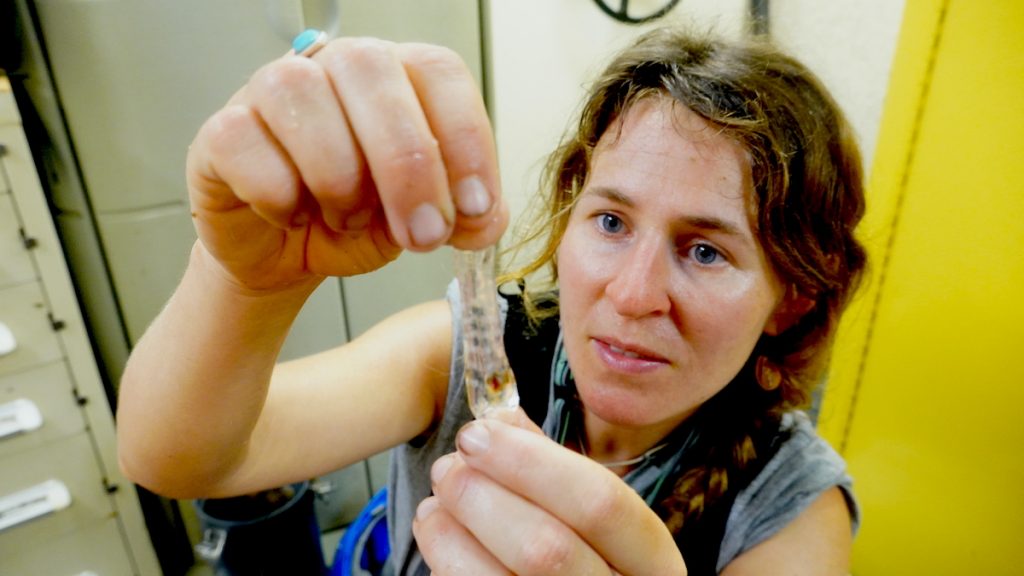
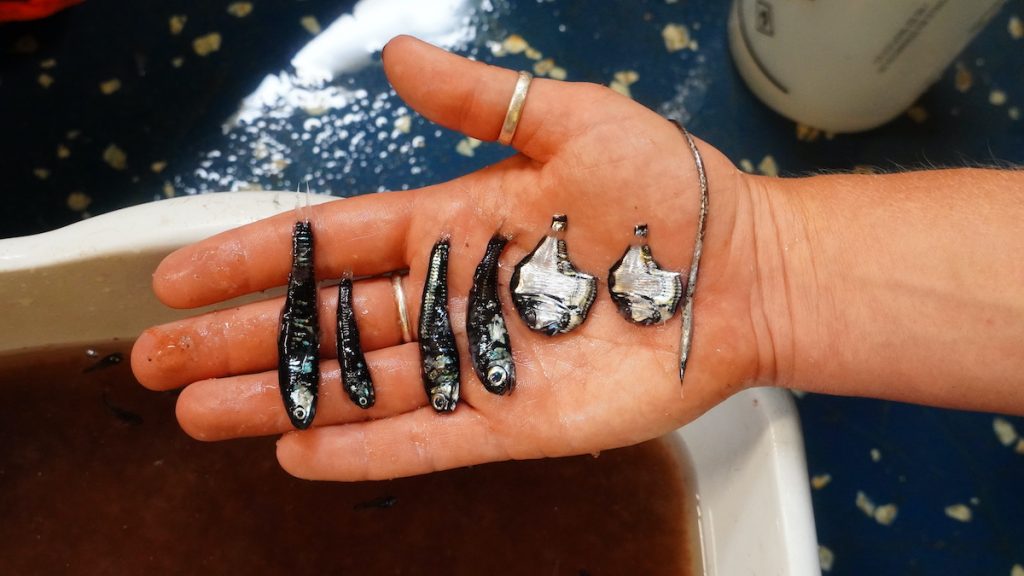
“It showed that our systems are working well,” said Julia Cox, a research assistant in the Llopiz lab. “The tow went really smoothly, and we got all the samples we wanted to get. It was a very successful tow overall, very promising.”







